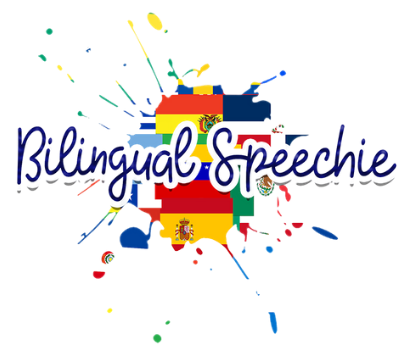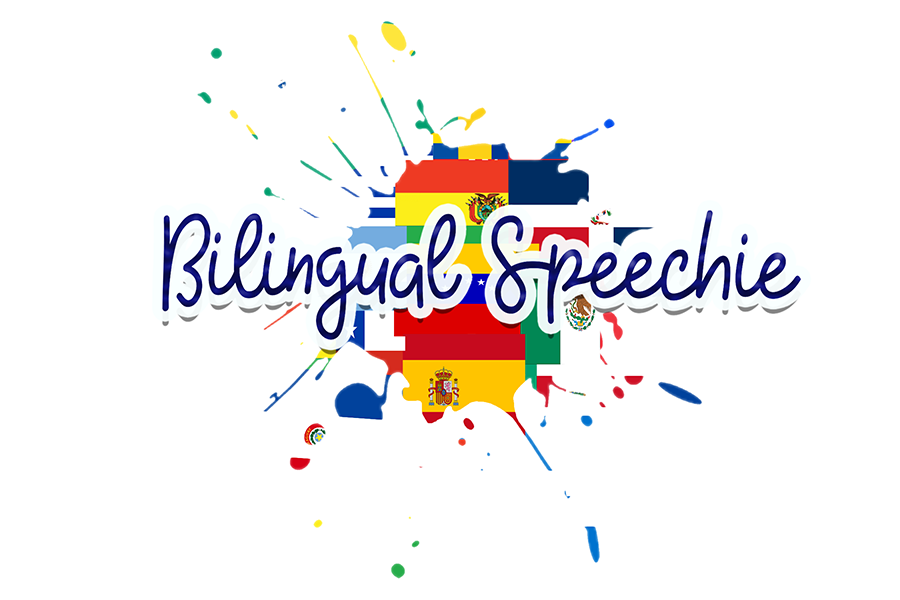por Liliana Diaz agosto 04, 2019
It can be super challenging to evaluate a student that speaks a completely different language other than the one you speak. With so many languages that exist in our world, (over 6,500 languages to be exact) as a SLP, you are bound to encounter a student that speaks another language other than English. According to the American Speech Hearing Association (ASHA) only about 6.4% of SLPs speak another language other than English, this may also mean that finding a bilingual SLP that speaks the language you need to assess may not always be accessible. So what do you do?
Use an interpreter. Meet with the interpreter prior to meeting with family in order to review the process, terminology, and what you want him or her to do. Ensure that you obtain a licensed interpreter and try to avoid using someone within the child’s family as a translator in order to reduce bias during the evaluation. Interpreters can provide lots of insightful information.
Conduct an in-depth family/caregiver interview. Caregivers can provide accurate information about a child’s communication strength and weaknesses. Understanding the family’s point of view about the child’s strengths or areas of need can provide a SLP with lots of insight about the child’s culture values, education status, language use and communication deficits.
Consider using non-standardized speech-language assessments, pragmatic tests, language samples or criterion referenced assessments. If formal/standardized assessments are not available in the child’s primary language, then consider utilizing non-standardized assessments like pragmatic check-lists or obtaining a language sample. These types of assessments will help determine the client’s understanding and use of conversational language, which is a building block to more complex language.
It is important to remember that it is not appropriate to translate standardized assessments in the student’s language in order to reach a standard score. These scores become invalid once translated because norm criteria is not based on the student’s language. In addition, SLPs cannot report standard scores when using assessments that are not normed for a specific language.
Utilize Dynamic Assessment. Research suggests that dynamic assessment when combined with other types of assessments can be the most useful when assessing bilingual children. Dynamic assessment is a method of assessment which uses a “test-teach-retest” model. It can help us determine difference versus disorder when working with children that speak another language other than English. Dynamic assessment focuses on the child’s ability to acquire the skills after being tested and after being exposed to instruction. Children who are able to make significant changes after short-term learning or intervention sessions are very likely to have language differences and not language disorders.
Use your Resources. ASHA always has great evidence-based articles that can assist you during your evaluation process. ASHA also has information about phonemic inventories of various languages as well as current research articles about several topics. Remember to look up current research about your student’s culture, phonemic inventory or language differences. Dr. Elizabeth Peña who is a professor at the University of Texas is a very well-known researcher in our field that does lots of research on culturally and linguistically diverse populations and/or bilingualism. Furthermore, utilize evidence-based practice books as resources. Bilinguisitics has a great book called Difference or Disorder which includes language patterns of several languages. They also have some E-Books with developmental norms in Spanish. In addition, websites can also be very useful. The Leaders Project (Law and Evidence-based Approaches for Disability Evaluation and Resources), founded and directed by Dr. Cate Crowley has great information about working with diverse populations and bilingual children. This website has information on the law, research, and current clinical practices related to assessment, treatment, and intervention both in the United States and internationally.
Los comentarios se aprobarán antes de mostrarse.
por Liliana Diaz diciembre 14, 2023
por Liliana Diaz julio 23, 2023
Have a client on your caseload that is demonstrating difficulty producing the CH sound? Perhaps you're a parent whose child is in speech therapy working on the CH sound? The CH sound can be a tricky sound to teach because it's hard to visually see what's going on inside the mouth when saying the sound. But no worries, here are some tips to help achieve that tricky CH sound.
por Liliana Diaz febrero 13, 2023 1 Comentario

¡Bienvenidos! ¡Soy Bilingual Speechie y este es mi blog de logopedia! ¡Aquí encontrará recursos y actividades bilingües (inglés y español) para la terapia del habla y lenguaje! ¡Estoy aquí para hacerles la vida más fácil!
Mi nombre es Liliana Díaz-Vázquez y obtuve mi licenciatura en trastornos de la comunicación en 2012 y mi maestría en patología del habla y lenguaje en la Universidad Saint Xavier en 2014.
Soy patóloga del habla y lenguaje bilingüe certificada (SLP) y actualmente trabajo en Chicago, Illinois. ¡Me apasiona trabajar con la población bilingüe! Me especializo en pediatría con niños de edades 1 a 18 años y principalmente trabajo con estudiantes bilingües y hispanohablantes en programas de educación general, programas preescolares y programas de educación especial.
Actualmente trabajo a tiempo completo en las escuelas públicas y a tiempo parcial en intervención temprana. También tengo mi propio blog y creo todo tipo de recursos / actividades bilingües que utilizo con mis propios clientes. Tengo una amplia experiencia en el tratamiento y la evaluación de una variedad de trastornos. He trabajado con niños con autismo, síndrome de Down, deficiencias cognitivas, discapacidades de aprendizaje, apraxia, trastornos de fluidez, trastornos del lenguaje y retrasos en el desarrollo.
Mis áreas de especialización incluyen comunicación aumentativa / alternativa (CAA), desarrollo del lenguaje bilingüe y la evaluación y tratamiento de retrasos / trastornos del lenguaje en niños bilingües.
Soy miembro de la American Speech-Language and Hearing Association (ASHA) desde el 2014, miembro de la Illinois Speech and Hearing Association (ISHA) desde el 2014 y tengo mi licencia en el estado de Illinois.
Además de trabajar con familias y niños, ¡soy un "foodie" de medio tiempo! ¡Sígueme en las redes sociales para ver todas mis aventuras gastronómicas en Chicago!
 Español
es
Español
es
 English
en
English
en
 Español
es
Español
es


Liliana Diaz
Autor